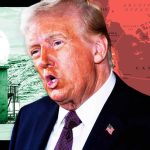Prince William says walking behind his grandmother’s coffin was “challenging” and “brought back a few memories”, alluding to the duty he fulfilled as a 15-year-old boy after his mother died.
The Prince of Wales made the remark to well-wishers outside Sandringham House where he and Kate were viewing flowers and tributes as more details of the Queen’s funeral were released.
In 1997, young Princes William and Harry followed the casket of their mother Princess Diana under the world’s gaze which Harry in 2017 told Newsweek should not be asked of any child.
While the circumstances are different this time, there was a similar emotion, solemn pageantry and sense of a momentous event unfolding in front of crowds and cameras.
William, the heir to the throne, walked behind his father King Charles and side by side with his younger brother Prince Harry from Buckingham Palace to Westminster Hall.
Later, the Prince of Wales could be heard in video footage on Thursday saying: “The walk yesterday was challenging.”
“Brought back a few memories.”
William and Harry were 15 and 12 when they followed their mother’s casket through central London. Photo: Getty
The body of the Queen is now lying in state in London’s ancient Westminster Hall, where officials expect about 750,000 people to view the coffin before the funeral on Monday (local time).
On Friday morning (Australian time) the queue was stretching 8km along the River Thames, with a waiting time of at least 8.5 hours, according to the queue tracker.
Meanwhile it was announced that there would be two minutes of silence across the UK at the conclusion of the Queen’s funeral at Westminister Abbey, the same church where Elizabeth was crowned in 1953.
For the first time, palace officials provided details of the funeral, likely to be one of the grandest ceremonies ever seen in London, involving thousands from the military and with details overseen by the monarch before her death.
From Westminister Hall, the coffin will be placed on the State Gun Carriage of the Royal Navy and pulled by 142 naval service personnel to Westminister Abbey for the funeral.
The public pays its respects in Westminister Hall where the Queen lies in state. Photo: Getty
After the one-hour service, the body will then be taken on the gun carriage in a large procession, with Charles and members of the royal family walking behind, from the Abbey to the Wellington Arch at Hyde Park Corner.
Guns will fire and parliament’s Big Ben bell will toll every minute.
The state hearse will then convey the coffin to Windsor Castle where there will be a further solemn procession before a service at Windsor Castle’s St George’s Chapel.
In a later private ceremony, Elizabeth will be buried with Philip at the King George VI Memorial Chapel where her parents and sister Princess Margaret were also laid to rest.
The Prince of Wales and Prince Harry during the procession of the Queen’s coffin. Photo: Getty
Buckingham Palace would not provide a list of those who will attend the funeral but royalty, presidents and other world leaders are expected to be there.
Prime Minister Anthony Albanese will touch down in London as debate about the future of the monarchy in Australia continues.
Mr Albanese left Australia for London on Thursday night alongside Governor-General David Hurley, their partners and a delegation of 10 Australian representatives.
Republic debate stirs
Mr Albanese has said it was not the right time to push for a Republic and he is not expected to entertain the proposal until a referendum has been held to enshrine an Indigenous voice in the constitution.
But former prime minister Julia Gillard said following a symbolic end of an era with the Queen’s death it was natural for Australians to reflect on the wider significance.
“I’ve always thought inevitably when the reign of Queen Elizabeth came to the end that people would reflect, but people will do that in a very measured and unhurried way,” she told BBC Radio on Thursday.
Ms Gillard, a self-described “lifelong republican”, said Australians could expect to have a discussion on constitutional change in the coming years but agreed now was not the time.
“The last time the nation considered becoming a republic that did not succeed largely because there was disputation about the model,” she said.
“There are things that need to be worked through and discussed and that can be done in a very measured way over time.”
A day of mourning will be held in Australia after Mr Albanese returns, with a public holiday to mark the occasion.
Funeral tradition
The Queen’s coffin draped in the Royal Standard and bearing the Imperial State Crown. Photo: Getty
The use of a gun carriage to carry the Queen’s coffin is a tradition that dates back to Queen Victoria’s passing 121 years ago.
On the day of Victoria’s funeral in 1901, her coffin was to be carried on the gun carriage through the streets of Windsor but in the bitter cold of that February day, the horses which were going to pull it panicked and reared up, threatening to topple the coffin off the carriage.
Captain Prince Louis of Battenberg — the future First Sea Lord of the Royal Navy — intervened and suggested to the new monarch, Edward VII, that the senior service should step in.
Once this was agreed, the horses were unharnessed and improvised ropes were attached to the gun carriage, which weighs 3000kg, and the team of sailors was brought in to ensure the coffin was carried safely for the rest of the route.
Only nine years later, at the funeral of Edward VII, the new routine became enshrined as a tradition which has been followed at all state funerals since including those of Kings George V and VI, Sir Winston Churchill and Lord Louis Mountbatten — the son of Captain Prince Louis of Battenberg.
Nowadays, it is kept under environmentally-controlled conditions at a temperature of between 16 and 20C and at humidity of between 40 and 70 per cent to prevent it becoming dry and brittle and to stop fungal growth.
It was built at the Royal Gun Factory at the Royal Arsenal in Woolwich to carry the standard light field gun of the Army at the time, the breech loaded 12-Pounder, but was converted into a ceremonial gun carriage by fitting a catafalque – a raised platform with horizontal rollers for moving the coffin.
The gun carriage is stored at HMS Excellent on Whale Island in Portsmouth where its upkeep is the responsibility of custodian Lieutenant Commander Paul “Ronnie” Barker.
-with AAP
The post Prince William says walking behind Queen’s coffin ‘brought back a few memories’ appeared first on The New Daily.






